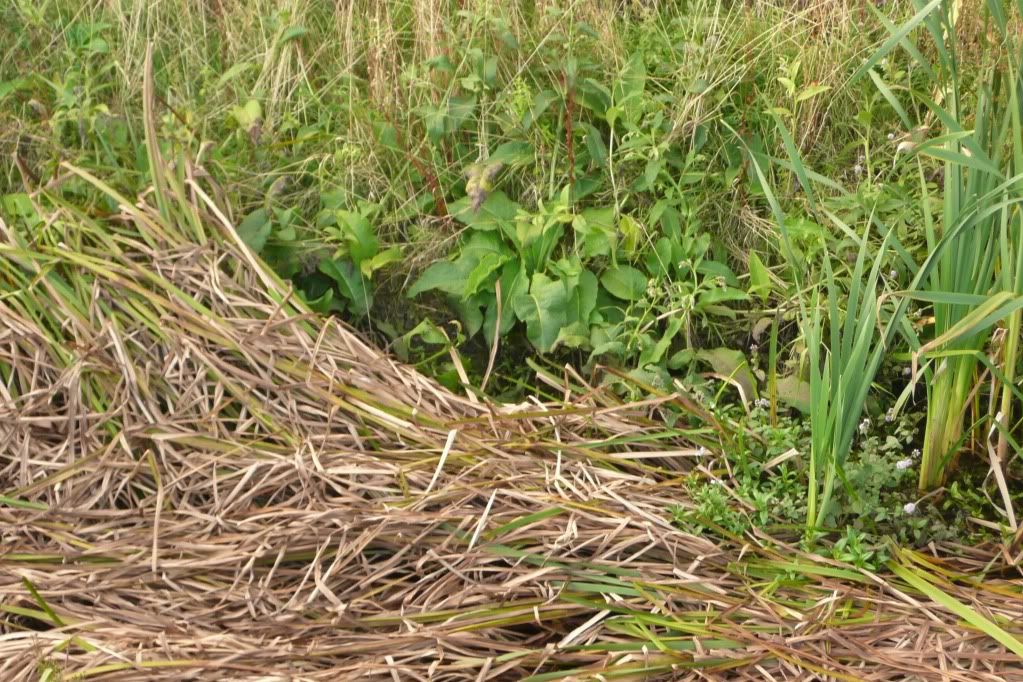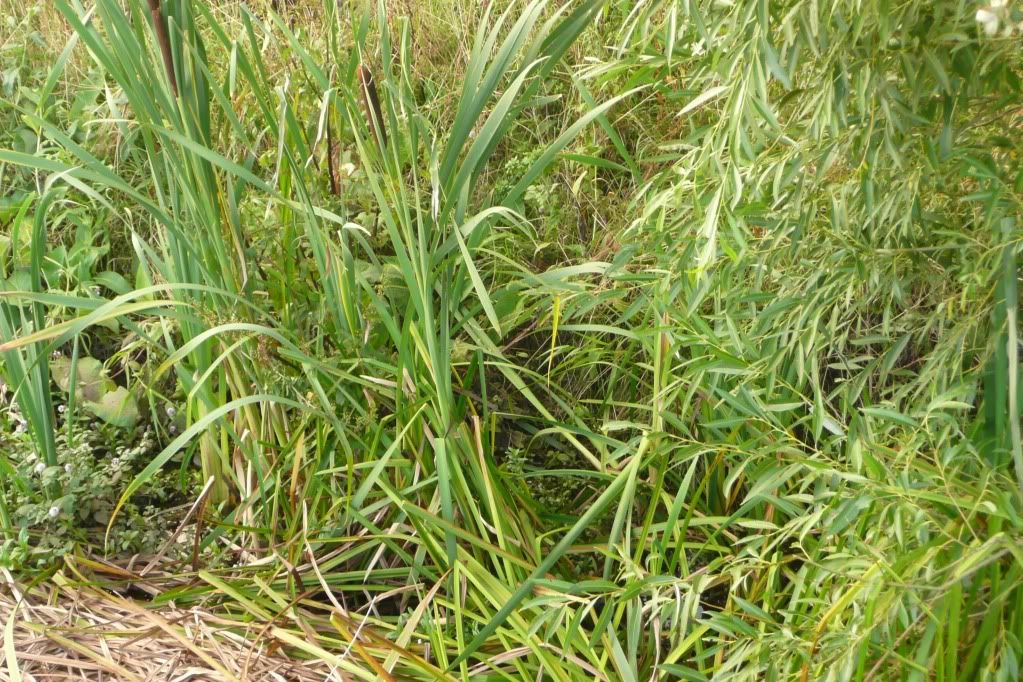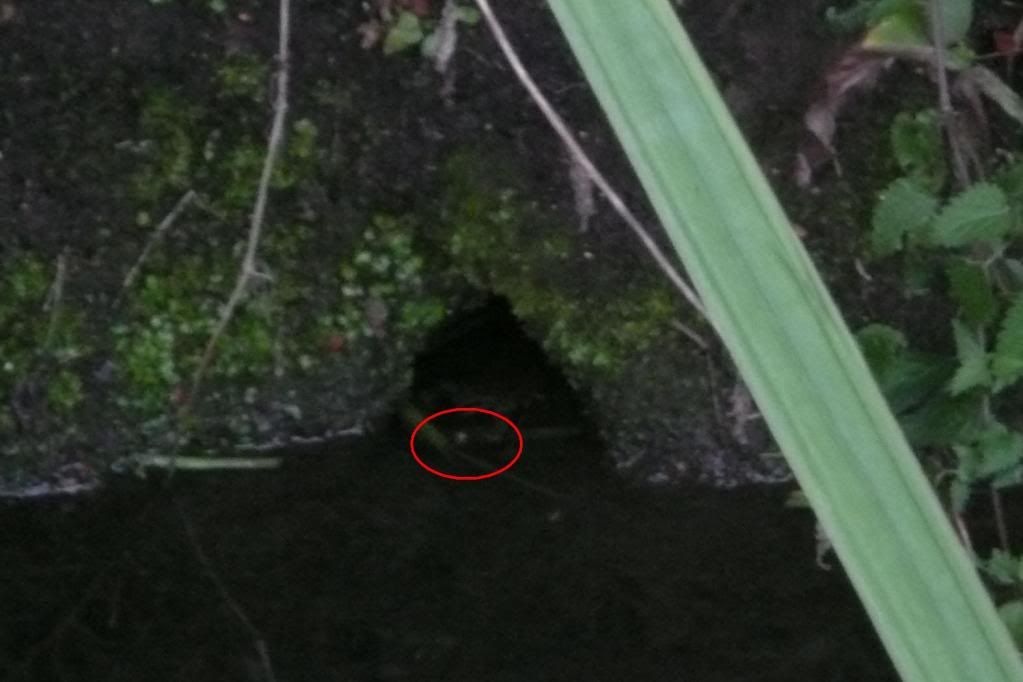Sandford Brook is a tributary of the Ock and has featured several times in this blog. Most recently in May this year where the possibility of water vole burrows was discussed:
http://viewsoftheock.blogspot.com/2010/05/signs-of-life-on-sandford-brook.html
http://viewsoftheock.blogspot.com/2010/05/signs-of-life-on-sandford-brook.html
Now four months later, the meadow has been cut it is easier to explore along the bank, but where there was once possible water vole signs, now it is just dead sedge and no obvious signs of feeding or burrows:
.
.
.
Further upstream, is a burrow made by a different animal. At first sight it might appear to have been made by a water vole as there is cut grass stems in the entrance:.
.
.
But with a bit of patience, the burrows creator reveals itself, a crayfish. Although not obvious in this picture (it was getting very dark), it is the white blotch on the hinge of the claw that marks it as one of the non-native crayfish:
.
.
Maybe the earlier signs were false alarms, but at the moment there seems to be no obvious signs of water voles at this part of Sandford Brook. Now autumn is here, the days are getting longer and the breeding season is over, the chance of finding any definite signs is remote.
However, further upstream, it has been a good year for water voles on Sandford Brook with several sightings from the hide at the Lasford Len Fen nature reserve, one of the reserves that make up the Cothill Fens.
.
.
.
Further upstream, is a burrow made by a different animal. At first sight it might appear to have been made by a water vole as there is cut grass stems in the entrance:.
.
.
But with a bit of patience, the burrows creator reveals itself, a crayfish. Although not obvious in this picture (it was getting very dark), it is the white blotch on the hinge of the claw that marks it as one of the non-native crayfish:
.
.
Maybe the earlier signs were false alarms, but at the moment there seems to be no obvious signs of water voles at this part of Sandford Brook. Now autumn is here, the days are getting longer and the breeding season is over, the chance of finding any definite signs is remote.
However, further upstream, it has been a good year for water voles on Sandford Brook with several sightings from the hide at the Lasford Len Fen nature reserve, one of the reserves that make up the Cothill Fens.




Hello,
ReplyDeleteI am a masters student from Queen Mary, University of London and am currently starting my Thesis on the effect of Signal Crayfish on riverbank erosion (due to their burrowing activities). I have developed a Crayfish Impact Assessment Form which I am hoping to conduct on as many reaches with crayfish burrows as possible. I have been to several sites on the Thames catchment suggested to me by the Environment Agency, however did not have much luck in finding any burrows.
I was wondering if you could give me details on the exact location of these photos on the Ock, and whether you would tell me if there is abundant burrowing here?
Thank you so much,
Sera Roberts
Hi Sera,
ReplyDeleteThank you for your comment and good luck with your Thesis & your Masters.
This crayfish was seen on Sandford Brook, a tributary of the Ock SU 481 967, where the brook runs past the large Tesco in Abingdon before joining the Ock.
I have not explored this part of the Ock catchment in the past couple of years as the land next to it has recently been farmed - so I cannot say how extensive the burrows are at the moment.
I have also seen crayfish exit burrows on the Ock near Drayton Road (SU 488 968).
I would not say there is abundant crayfish burrowing (most of the burrows along the Ock are water voles) and I don't think they have caused much erosion, as most of it seems to be caused by the river itself.
If you're on twitter then you could contact @crayfish_uk who are the native crayfish tweeter feed for buglife, but may know of sites where signal crayfish run amok.
If you would like more information, please feel free to send me an email at Ockviewer[at]gmail.com
Hope that helps
Richard
This comment has been removed by the author.
ReplyDelete